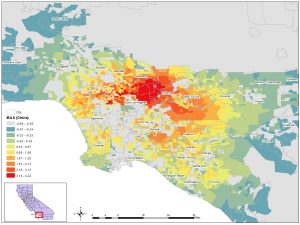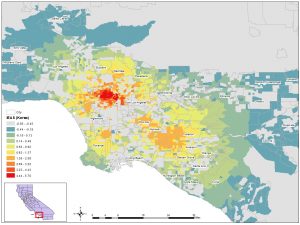Studies typically measure immigrant neighborhoods based on the composition of the residential population. However, although ethnic businesses are an important component of immigrant neighborhoods, scholars often do not consider them when constructing measures of these neighborhoods. This study proposes a novel way to mesaure immigrant neighborhoods that combines information about the residential population, the presence of ethnic businesses, and the spatial distribution of these measures for creating what we term immigrant ethnic activity space (IEAS). Using data for the Southern California region, we find that this measure of immigrant neighborhoods often exhibits a robust negative relationship with levels of crime.
You can access the article by Dr. Young-an Kim, Dr. John R. Hipp, and Dr. Charis Kubrin in the Journal of Criminal Justice entitled, “Where They Live and Go: Immigrant Ethnic Activity Space and Neighborhood Crime in Southern California.”
Get it here: https://www.sciencedirect.com/science/article/pii/S0047235218303775
Abstract:
“The current study advances the literature by simultaneously accounting for the geographic location of immigrant residences and the location of ethnic businesses, and considers their proximity to one another. We argue our alternative measure, which we term Immigrant Ethnic Activity Space (IEAS), more fully captures the ecology of immigrant communities. Using data from several sources to capture neighborhoods in the Southern California region, we constructed IEAS measures for the seven largest ethnic groups in the region, including groups from Mexico, China, Korea, Vietnam, Philippines, Armenia, and El Salvador. These measures reflect where immigrants live and where they go for various ethnic-related routine activities, as well as the distance between the two. We estimated a set of negative binomial regression models to examine the effects of the IEAS measures on neighborhood violent and property crime rates. We find that our IEAS approach is distinct from traditionally-employed measures of immigrant neighborhoods. We also find that IEAS measures have negative associations with both violent and property crime, in general. The current study proposes and develops an alternative approach to conceptualizing immigrant neighborhoods, which more closely aligns with extant theory and should be considered in future research on the immigration-crime nexus.”
Map of Chinese IEAS in Southern California
Map of Korean IEAS in Southern California
Map of Vietnamese IEAS in Southern California


